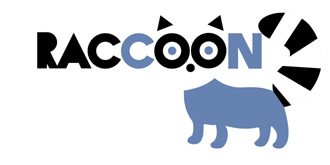| |
PEACE IS POSSIBLE.
EACH INDIVIDUAL STORY IS VALUABLE.
Yugos were brought to the U.S. by the ex-U.S. ambassador to Yugoslavia, Lawrence Eagleburger's friendship with Slobodan Milosevica and then cordial relations between the two countries military-industrial complexes. Those cheap cars were sold to American consumers between 1985 and 1991. Yugo's distribution company (New-Jersey-based Global Motors Inc.) filed for chapter 11 toward the end of 1991. With cesation of the trade relations between Serbia, where Yugo was assembled, and Northern republics of Slovenia (where steel for the engine was made) and Croatia (where the plastic components were made), the quality of Yugo cars dropped steadily since 1986. When the war in Bosnia became a likely reality, Yugo's father company Zavodi Crvena Zastava in Kragujevac (originally a gun factory since 19th century), Serbia needed to shift its focus to military production, and was therefore unable to produce much-needed spare parts. U.S. car dealers started giving them away with different purchase plans. With the purchase of a large sedan, the Cadillac Eldorado, for example, dealers sometimes threw in a Yugo for free! Subsequently, the car was declared the worst car ever to be driven on the American roads and became the subject of many jokes. Finally, in 1999, during the NATO bombing of Yugoslavia, the military factory were Yugos were produced was supposedly put out of its misery by NATO bombs. Not the case, though. Yugo will be back to the U.S. under a new name: ZMW.
In 1995, artist Kevin O'Callaghan, a Manhattan School of Visual Arts professor, saw
something of beauty in the car that the public has turned its back on. He bought 39
rusty Yugos and asked his students to make objects of functional art from them.
Due to the oversupply of Yugos in the marketplace, the 39, mostly dead were obtained for a total of $3600. They were used in the project "Here Is a Lemon: Make a Lemonade": students were required to turn Yugos into whatever they want so long as it was functional. The low price made Yugos more attractive for the project than earlier choices, such as the checker cab, VW Bug, etc. These Yugos were also easy to work on: they are of light material, the body is made of thin metal, and so forth, students were cheering. The exhibition Yugo-Next was created, toured the U.S. and was also displayed in the renovated Grand Central Station in New York city (more pictures). Click here for the Washington Post article about the exhibition. This piggy was created unconnected to the exhibition by a family in Illinois. Here you can check files on Yugogal, woman at The Bronx that proudly owns THREE Yugos.
With similar spirit, Raccoon wants to utilize the shell of a Yugo for a Cyber
experience of the post-yugoslav societies. A computer system with a fast
DSL modem and CD ROM drive would be the "engine," for the Cyber Yugo.
A detailed geographic map would be virtually navigated
with this Yugo. Through the windshield the map would be projected to the wall in front and the animated Yugo car serving as a cursor would be moved by the
steering wheel and a gas pedal. The break pedal would serve as a right mouse button for double-clicking and activating links. Relevant links would open corresponding to the location of the cursor on the map. Content of the links will be provided through digitized video footage on the CD, direct links to resource sites and direct links to the available web-cams in the region. Cyber-Yugo will be equipped with a mock radio/cassette player - the radio component will allow the user to choose between several independent FM stations in former Yugoslavia provided through real-media stream from a server in Amsterdam, while the cassette player will play rock music from the region, with around 300 songs stored in the mp3 juke-box on-site.
In order for everybody to get a chance to drive it, the Yugo would have a friendly "road mine" built in, which would "detonate" and log-off current user upon reaching the time limit.
Cyber-Yugo will be transportable and available for exhibit in museums around the world.
The Yugo display sites should be made accessible to college and high school
kids with assignments in history, cultural anthropology, political science,
sociology or to anybody with interest in post-yugoslav societies and the
war there.
For updates on the Cyber Yugo go back here. Coordinator for this project is Ivo Skoric.
|
 |
| |
RACCOON, Inc., (map and driving directions)
43-32 22nd Street, Suite (buzzer) 301 in
Long Island City, between 43th and 44th Avenue
| Take |
 |
or |
 |
subway to 23rd Street, Ely Avenue |

|
 The Summer Youth Camp was made possible by a
generous grant from The New York
Foundation.
The Summer Youth Camp was made possible by a
generous grant from The New York
Foundation.
| |
 |
|
|
|

